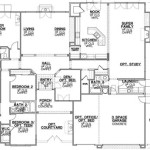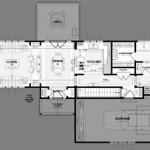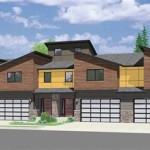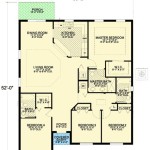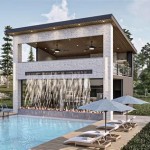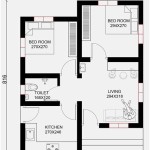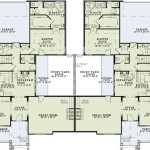Flat Roof Home Design Plans
Flat roof homes have become increasingly popular in recent years due to their sleek and modern aesthetic, as well as their energy efficiency and affordability. If you're considering building a flat roof home, it's important to understand the design considerations and the advantages and disadvantages of this type of roof.
Design Considerations
Flat roofs are typically made from materials such as concrete, metal, or rubber membranes. They have a very low slope, often less than 10 degrees, and require careful attention to waterproofing and drainage to prevent leaks. The design of a flat roof home should incorporate measures to ensure proper water runoff and to minimize the risk of ponding, which can lead to structural damage.
Flat roofs offer greater flexibility in terms of design compared to sloped roofs. They can be used to create unique and modern architectural features, such as roof gardens, terraces, or skylights. However, it's important to consider the weight of any additional structures or features when designing a flat roof to ensure that the roof can adequately support the load.
Advantages of Flat Roof Homes
Energy efficiency: Flat roofs can be more energy efficient than sloped roofs because they have less surface area exposed to the elements. This can result in reduced heating and cooling costs, especially in climates with extreme temperatures.
Cost-effective: Flat roofs are generally less expensive to build than sloped roofs due to the reduced materials and labor required. This can make them a more affordable option for homebuyers.
Modern aesthetic: Flat roofs create a sleek and modern look that is often associated with contemporary architectural styles. They can complement a variety of exterior materials and design elements, from glass and metal to wood and stone.
Disadvantages of Flat Roof Homes
Waterproofing: Flat roofs are more susceptible to leaks than sloped roofs due to their low slope. Proper waterproofing and drainage measures are essential to prevent water damage and ensure the longevity of the roof.
Maintenance: Flat roofs require regular maintenance to ensure that the waterproofing membrane is intact and free of damage. This may include inspections, cleaning, and repairs as needed.
Drainage: Flat roofs must be designed with a proper drainage system to prevent water from pooling and causing damage. This can include scuppers, drains, or other methods of directing water away from the roof.
Conclusion
Flat roof home design plans can create modern and energy-efficient homes that are both stylish and affordable. However, it's important to carefully consider the design considerations, advantages, and disadvantages of flat roofs before making a decision about whether this type of roof is right for your home. By working with an experienced architect and builder, you can ensure that your flat roof home is well-designed, properly constructed, and meets your specific needs and preferences.

House Design Plans 5 5x6 With One Bedroom Flat Roof Designs

House Design 7x10 With 3 Bedrooms Terrace Roof Flat Plans

House Plans 7x6 With One Bedroom Flat Roof Samphoas Plan Small Design

House Design Plans 5 5x6 With One Bedroom Flat Roof Small

10 Best Flat Roof House Designs In Kenya That Will Inspire You To Co Ke

3 Bedroom Flat Roof House Plan Muthurwa Com

House Plans 7x6 With One Bedroom Flat Roof Samphoas Plan Small Modern

Flat Roof House Plans Floor Designs Houseplans Com

Flat Roof House Plans With Photos Daily Plan And Designs Books

House Plans 10 7x10 5 With 2 Bedrooms Flat Roof Samphoas Plan E1a Designs

